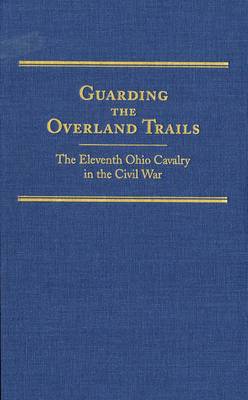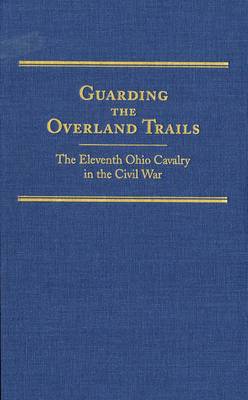
- Retrait gratuit dans votre magasin Club
- 7.000.000 titres dans notre catalogue
- Payer en toute sécurité
- Toujours un magasin près de chez vous
- Retrait gratuit dans votre magasin Club
- 7.000.0000 titres dans notre catalogue
- Payer en toute sécurité
- Toujours un magasin près de chez vous
Guarding the Overland Trails, Volume 24
The Eleventh Ohio Cavalry in the Civil War
Robert Huhn JonesDescription
The Civil War left the western trails vulnerable and dangerous. Emigrants still streamed westward and demanded protection. The mail still had to be delivered, the telegraph protected. The newly minted states of California and Oregon on the Pacific Coast were precious to the government in Washington, D.C., and the Mormon settlements in the Great Basin demanded close attention following the Utah War of 1858.
The 11th Ohio played a crucial role during the Civil War years on the overland roads. The first battalion sent to Fort Laramie in 1862 had not volunteered to serve out west, though those recruited in 1863 and 1864 knew they were destined for western duty. They were among the last volunteers raised from any state during the Civil War to be discharged in July 1866.
The thunder of the greater war drowned out the violent and deadly war in the West along the overland roads. And it has continued to do so. While both the Civil War and nineteenth-century western history have provided fertile fields for historical investigation, few historians have focused on the plight of the overland roads during the Civil War or the impact of the war on the area they crossed.
The 11th Ohio had enlisted to fight Confederates. Instead they fought Native Americans, escorted emigrants and mail, and operated, rebuilt, and restrung the telegraph. They built and rebuilt tiny stations and other posts along the roads, died in combat, and froze to death in winter storms. For the most part, these Ohioans were strung out along the roads in small detachments, seldom in company strength, and the regiment never served or fought as one.
The Platte River and Overland roads, truly the primary lines of communication between the settled parts of the Union east of the Missouri River and the newer states on the Pacific Coast, were guarded by the 11th Ohio from the Missouri River to just west of the Continental Divide.
Fights at Sand Creek and Platte Bridge affected the troops, directly and indirectly, and play an important part in their story. The Civil War was a time of increased conflict between settlers, emigrants, and the native peoples east of the Rockies. Arapahos, Bannocks, Cheyenne, Comanches, Kiowas, and Sioux all figure prominently in the story.
George Bent, Jim Bridger, John Chivington, Lt. Col. William O. Collins and his son Caspar, Col. Patrick E. Connor, and Maj. Gen. Grenville M. Dodge are just a few of the well-known personages active in the story. Additionally, the diaries of enlisted men are quoted at length in describing the conditions of service.
Six maps and nineteen illustrations supplement the text. The contemporary drawings of soldiers Caspar Collins and Charles F. Moellman are especially illuminating, giving first-hand visual images and plats of various stations.
The book contains notes, statistics, bibliography, and index. Embellished with nineteen illustrations and six maps. Printed on acid-free paper, sewn and bound in blue linen cloth with foil stamped spine and front cover. Issued in an edition limited to 750 copies.
Spécifications
Parties prenantes
- Auteur(s) :
- Editeur:
Contenu
- Nombre de pages :
- 372
- Langue:
- Anglais
- Collection :
- Tome:
- n° 24
Caractéristiques
- EAN:
- 9780870623400
- Date de parution :
- 01-06-05
- Format:
- Livre relié
- Format numérique:
- Genaaid
- Dimensions :
- 165 mm x 243 mm
- Poids :
- 748 g

Les avis
Nous publions uniquement les avis qui respectent les conditions requises. Consultez nos conditions pour les avis.






